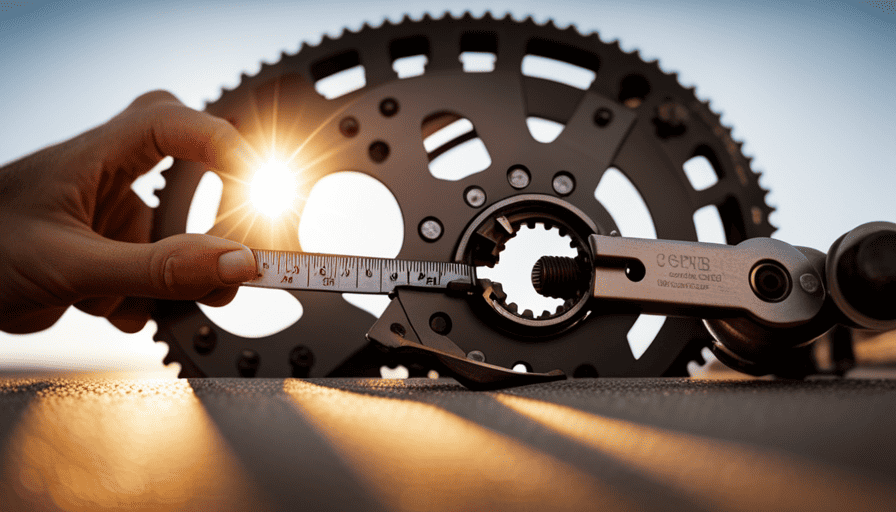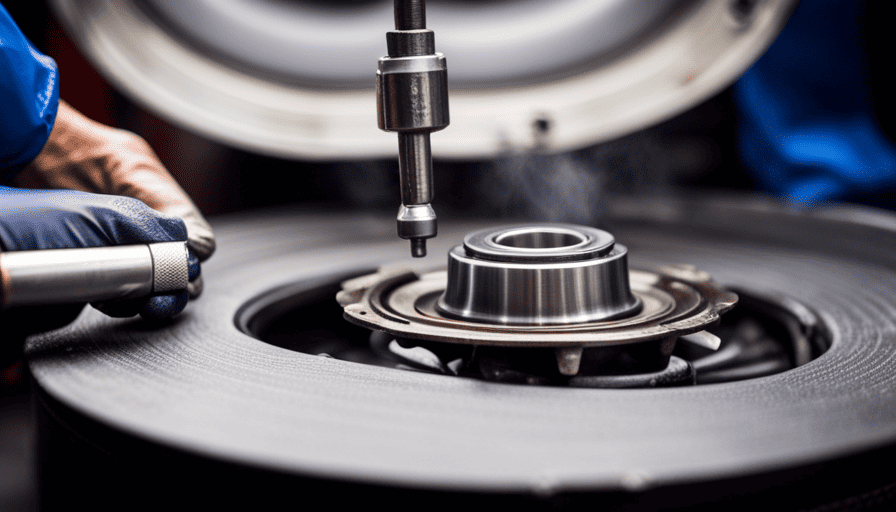Tired of the dull and plain walls of your RV? Looking to personalize with photos, decorations, or storage solutions? Don’t worry, I have the perfect guide for you on how to attach different items to your RV walls! Get ready to transform your RV into a cozy and organized retreat that reflects your individual style and keeps everything neatly in place.
In this article, I will walk you through various methods, from using command strips to screw-in hooks, magnetic mounts, tension rods, and storage solutions. I’ll provide step-by-step instructions and practical tips on how to assess your wall material, choose the right mounting method, and prepare the surface for a secure attachment. Plus, I’ll guide you on how to test and adjust your attachments to ensure they stay put during your adventures.
So, get ready to unleash your creativity and make your camper walls the envy of the campground. Let’s dive in and discover how to attach things to camper walls like a pro!
Key Takeaways
- Assess the wall material to determine the best mounting options
- Choose the mounting method based on the weight and permanence of the item
- Prepare the wall surface by cleaning it thoroughly and ensuring it is dry
- Test the stability of attachments before traveling to prevent accidents or damage
Assess Your Wall Material
You’ll want to assess your wall material to determine the best way to attach things to it. When it comes to mounting options for camper walls, the first step is understanding your wall material compatibility.
The type of material your camper walls are made of will dictate the methods you can use to attach items securely.
If your camper walls are made of wood, you have a variety of options available. You can use screws or nails to attach hooks, shelves, or other items directly to the walls. Just make sure to choose the appropriate length and size of screws or nails to ensure a secure attachment. For heavier items, you may want to consider using wall anchors to provide additional support.
If your camper walls are made of fiberglass or aluminum, attaching items might be a bit more challenging. In this case, adhesive hooks or mounting tapes can be a great option. These are designed to stick to smooth surfaces and provide a strong hold without damaging the walls.
Once you’ve assessed your wall material and determined the best mounting options, it’s time to choose the right mounting method.
Choose the Right Mounting Method
When choosing a mounting method for attaching items to camper walls, it’s important to consider the weight and permanence of the attachment. For lightweight items, such as small decor or kitchen utensils, adhesive hooks or strips can be a great option. They’re easy to install and remove without causing damage to the walls.
However, for heavier or more permanent attachments, like shelves or TV mounts, it’s best to use screws or brackets for added stability and security. These methods ensure that your items stay in place even during travel, providing a practical and reliable solution for organizing your camper space.
Consider using adhesive hooks or strips for lightweight items
For a quick and easy solution, try using adhesive hooks or strips to effortlessly attach lightweight items to your camper walls – it’s like magic! Adhesive hooks are a fantastic choice when you want to hang small decorative items, towels, or lightweight utensils. They’re incredibly easy to use and don’t leave any damage when removed properly.
Adhesive strips also work well for lightweight items and provide a bit more flexibility in terms of positioning. Simply peel off the backing, press the strip against the wall, and you’re good to go.
However, keep in mind that adhesive hooks and strips may not hold up heavy or bulky items, so it’s important to consider the weight and size of what you want to hang.
Speaking of heavier items, let’s move on to using screws or brackets for more permanent attachments.
Use screws or brackets for heavier or more permanent attachments
To securely hang heavier or more permanent items in your camper, consider using screws or brackets. When deciding between screws and brackets, it’s important to consider the weight and stability of the item you want to attach.
Screws are a reliable option for attaching items like shelves or cabinets, as they provide a strong and secure hold. Brackets, on the other hand, are great for hanging items like TVs or mirrors, as they offer additional support and stability.
Adhesive hooks may work for lightweight items, but for heavier or more permanent attachments, screws or brackets are the way to go.
Before attaching anything, make sure to prepare the surface by cleaning it thoroughly and ensuring it is dry and free from any debris. This will help ensure a strong and long-lasting attachment.
Prepare the Surface
First things first, make sure you’ve properly prepped the surface before attaching anything to your camper walls. This step is crucial to ensure a strong and long-lasting attachment.
To start, use measuring techniques to determine the exact placement of the item you want to attach. Measure twice to avoid any mistakes.
Next, consider the adhesive type that’ll work best for your specific attachment. There are various options available, such as heavy-duty adhesives, double-sided tapes, or adhesive hooks. Choose one that’s suitable for the weight and size of the item you’re attaching.
Before applying the adhesive, clean the surface thoroughly to remove any dirt, dust, or grease. Use a mild detergent or a cleaning solution recommended for the camper walls. Dry the surface completely before proceeding to the next step.
Once the surface is clean and dry, apply the adhesive according to the manufacturer’s instructions. Press firmly and hold for the recommended amount of time to allow for proper bonding.
With the surface properly prepped, you can now move on to the next section about using command strips or hooks. These options provide a convenient and damage-free way to hang lighter items.
Use Command Strips or Hooks
Now let’s explore the option of using command strips or hooks to effortlessly hang lighter items in your camper. When it comes to attaching things to camper walls, it’s important to assess the strength of the walls and choose the right mounting option accordingly. Command strips and hooks are a great alternative for those who don’t want to drill holes or damage the walls.
Command strips are adhesive strips that can be easily attached to the wall and removed without leaving any residue. They come in various sizes and weight capacities, so make sure to choose the right one for your needs. Hooks, on the other hand, provide a convenient way to hang items such as towels, small organizers, or lightweight decorations. They can be easily installed and removed when needed.
To help you understand the different options available, here’s a table comparing command strips and hooks:
| Command Strips | Hooks |
|---|---|
| Adhesive | Hooks |
| Easy to remove | Convenient |
| Various weight capacities | Easy installation |
Using command strips or hooks is a practical and non-invasive way to hang lighter items in your camper. However, if you need to hang heavier objects or prefer a more permanent solution, the next section will discuss how to install screw-in hooks or brackets.
Install Screw-In Hooks or Brackets
Looking to hang heavier items in your camper? Let’s explore how you can easily install screw-in hooks or brackets for a more permanent solution.
When it comes to mounting options, screw-in hooks or brackets provide a sturdy and reliable way to secure lightweight items to your camper walls. These hooks or brackets are designed to be screwed directly into the wall, ensuring a secure hold that can withstand the movement and vibrations of your camper.
To install screw-in hooks or brackets, start by choosing the appropriate size and style for your needs. Then, mark the desired location on the wall and use a drill to create a pilot hole. Once the pilot hole is ready, simply screw the hook or bracket into place, making sure it’s tightly secured.
Screw-in hooks or brackets are ideal for hanging items such as mirrors, small shelves, or lightweight decor. They provide a more permanent solution compared to command strips or hooks, ensuring that your items stay securely in place even during bumpy rides.
Now that you’ve learned about installing screw-in hooks or brackets for heavier items, let’s move on to the next section and explore how you can use velcro or dual-lock tape for securing items that require less support.
Use Velcro or Dual-Lock Tape
When it comes to securing lighter items in your camper, velcro or dual-lock tape can be your best friend, providing a simple yet effective solution. Imagine effortlessly sticking a small picture frame to the wall with velcro, creating a seamless and secure bond that withstands the twists and turns of your journey.
Velcro is a versatile option that allows you to easily attach and detach items as needed. It comes in various strengths, with heavy-duty options available for larger or heavier objects. Dual-lock tape, on the other hand, is a more robust alternative to velcro. It consists of two interlocking strips that provide a stronger hold, making it ideal for items that require extra security.
When choosing the best adhesive for camper walls, it’s important to consider the surface material and the weight of the item you want to attach. For smooth surfaces like fiberglass or metal, a strong adhesive like epoxy or construction adhesive would be suitable. However, for textured or porous surfaces like wood or fabric, it’s best to use a strong adhesive specifically designed for those materials. Always follow the manufacturer’s instructions for application and drying time to ensure a proper bond.
Considering magnetic mounts for your camper walls is another option worth exploring. Magnetic mounts provide a convenient and easy way to attach lightweight items without the need for adhesives or drilling. They’re particularly useful for holding small tools, kitchen utensils, or keys. By utilizing magnetic mounts, you can keep your camper organized and clutter-free.
Transitioning into the subsequent section, it’s important to explore all the options before making a decision on how to attach things to camper walls. Consider the weight, the surface material, and the ease of attachment to find the best solution for your specific needs.
Consider Magnetic Mounts
Imagine effortlessly organizing your lightweight items in your camper by using magnetic mounts, providing a hassle-free and convenient solution. Magnetic hooks are a versatile option for attaching things to camper walls. With their strong magnetic force, they securely hold items such as keys, utensils, and small tools. Simply attach the hooks to the walls using adhesive strips, and you’ll have an instant storage solution that won’t damage the interior of your camper.
One of the great benefits of using magnetic mounts is their ease of installation. The adhesive strips are simple to apply and won’t leave any marks or residue when removed. Plus, the magnetic hooks can be easily repositioned or removed whenever needed, giving you flexibility in organizing your space.
When choosing magnetic hooks for your camper, make sure to select ones that are strong enough to hold your desired items securely. Consider the weight and size of the items you plan to hang, and choose hooks with a corresponding strength. This will ensure that your belongings stay in place while you’re on the move.
Now that you’ve discovered the convenience of magnetic mounts, let’s explore tension rods as another option for attaching things to camper walls.
Explore Tension Rods
When it comes to attaching things to the walls of my camper, one solution I’ve found to be effective is using tension rods.
The first step is to measure the width of the camper wall where I want to place the rod. Once I’ve got the measurement, I can easily adjust the tension rod to fit snugly between the walls. This provides a secure attachment point for various items, such as curtains or storage organizers.
It’s a simple and practical solution that requires minimal effort but yields great results in terms of organization and functionality within the camper.
Measure the width of your camper wall
To accurately attach things to your camper walls, start by measuring the width using a tape measure. This step is crucial to ensure that the tension rod you choose fits snugly between the walls.
To make the measurement process easier, follow these techniques:
- Use a sturdy tape measure to get accurate measurements.
- Measure the width at different points along the wall to account for any inconsistencies.
- Take note of any obstacles or uneven surfaces that may affect the placement of the tension rod.
- Consider the compatibility of the wall material with the tension rod, as some materials may require additional support or special attachments.
- Double-check your measurements to avoid any miscalculations.
Once you have accurately measured the width of your camper wall, you can proceed to adjust the tension rod to fit snugly between the walls, ensuring a secure and stable attachment.
Adjust the tension rod to fit snugly between the walls
Get ready for a mind-blowing experience as you effortlessly adjust the tension rod to perfectly fit between those magnificent walls of yours. When it comes to attaching things to camper walls, adjustable tension rods are a versatile and convenient solution. These rods can be easily extended or shortened to fit the width of your camper wall, providing a secure and stable support for various items. To ensure a snug fit, measure the width of your camper wall and adjust the tension rod accordingly. Here’s a handy table to help you visualize the process:
| Step | Action |
|---|---|
| 1 | Measure the width of your camper wall |
| 2 | Adjust the tension rod to fit snugly between the walls |
| 3 | Secure the tension rod in place |
By utilizing adjustable tension rods, you can explore alternative mounting options without the need for permanent fixtures. Now, let’s delve into the next section and discover how to utilize storage solutions effectively.
Utilize Storage Solutions
One effective way to make the most of limited space in your camper is by using storage solutions. Camper wall organization is key when it comes to maximizing every square inch.
There are plenty of creative storage solutions available that can help you keep your belongings organized and easily accessible. One popular option is using hanging organizers that attach to the walls of your camper. These organizers typically have multiple pockets, allowing you to store a variety of items such as toiletries, kitchen utensils, or even small clothing items. They can be easily hung on hooks or rods and are a great way to keep your essentials within reach.
Another storage solution that works well in campers is using stackable storage bins. These bins can be stacked on top of each other, utilizing vertical space and keeping things neat and tidy. They are perfect for storing items such as food, cleaning supplies, or outdoor gear.
By utilizing these creative storage solutions, you can keep your camper organized and clutter-free. The next step is to test and adjust these storage solutions to ensure they meet your specific needs and preferences.
Test and Adjust
Before hitting the road, it’s crucial to check the stability of your attachments. This will ensure everything stays in place during your journey. I highly recommend making any necessary adjustments to address any potential issues before you start your trip. This proactive approach will help prevent any accidents or damage to your belongings while on the road.
Check the stability of your attachments before hitting the road
Ensure that you thoroughly test the stability of your attachments to the camper walls, so as to prevent any potential accidents or damage while you’re on the road. It is crucial to assess the stability of your attachments before embarking on your journey. To do this, consider the type of wall material in your camper. Different materials may require different attachment methods. For example, if your camper walls are made of wood, ensure that the attachments are securely fastened to avoid any wobbling or falling during transit. On the other hand, if your walls are made of metal, use appropriate fasteners and brackets to ensure stability. Additionally, I recommend incorporating a 3 column and 3 row table to help you keep track of your attachments and their stability. Once you have completed the stability testing, you can make any necessary adjustments to ensure everything stays in place during your travels.
Make any necessary adjustments to ensure everything stays in place
Before hitting the road in my camper, I always make sure to check the stability of the attachments I’ve made to the walls. It’s essential to ensure that everything stays in place during travel.
Once I’ve assessed the stability, I make any necessary adjustments to guarantee everything remains secure. This includes evaluating the wall material and making sure my attachments are suitable for it. Different camper walls may require different types of fasteners or adhesive, so it’s crucial to choose the right one.
I also double-check the tightness of screws and bolts, ensuring they’re properly secured. If needed, I reinforce the attachments with additional support or braces.
By meticulously assessing the wall material and making necessary adjustments, I can have peace of mind knowing that everything will stay securely in place while I’m on the road.
Frequently Asked Questions
Can I attach heavy objects to camper walls using Command Strips or Hooks?
Can heavy objects be safely attached to camper walls using command strips or hooks?
While command strips can work well for hanging pictures in a camper, they may not be strong enough to support heavy objects. To properly hang shelves in a camper, it’s important to use sturdy brackets and screws that are appropriate for the weight of the shelves. This ensures a secure attachment and minimizes the risk of damage or accidents while on the road.
Can I use Velcro or Dual-Lock Tape on all types of camper wall materials?
Can I use adhesive hooks on camper walls? Adhesive hooks are a convenient option for hanging lightweight objects on camper walls. However, it’s important to check the weight limit specified by the manufacturer before using them. If you need to hang heavier items, alternative methods such as velcro or dual-lock tape can be used.
These methods offer a secure hold on various types of camper wall materials, ensuring your belongings stay in place during your travels.
Are magnetic mounts strong enough to hold larger items on camper walls?
Are magnetic mounts strong enough to hold larger items on camper walls?
While magnetic mounts can be a convenient option for attaching small items, they may not provide the necessary strength for larger items. However, there are alternative mounting options for camper walls that can securely hold larger items without damaging the surface.
Consider using adhesive hooks, tension rods, or hanging organizers specifically designed for campers. These options offer practical and effective ways to secure items without compromising the integrity of the camper walls.
Can tension rods be used to hang curtains or other heavy items on camper walls?
Yes, tension rods can be a great alternative method for attaching curtains or other heavy items to camper walls. They’re easy to install and remove, and can provide a secure hold.
To maximize storage space in a camper, consider using storage bins that can be hung on hooks or mounted to walls. Utilizing vertical space with shelves or hanging organizers can also help maximize storage potential.
Are there storage solutions specifically designed for camper walls that I should consider?
When it comes to campervan organization and camper wall decor, there are storage solutions specifically designed for camper walls that you should consider. These solutions not only maximize space but also add a personal touch to your camper.
One interesting statistic to consider is that using these specialized storage solutions can increase your available storage space by up to 50%. So, whether you need extra shelves, hooks, or baskets, there are plenty of options available to help you keep your camper organized and stylish.
Can You Attach Things to Camper Walls Even Though They Are Thick?
When it comes to the thickness of camper walls, it is possible to attach things to them, but it requires careful consideration. The weight, size, and type of attachment are crucial factors to keep in mind. Using lightweight materials, such as adhesive hooks or tension rods, can be safer options to prevent compromising the integrity of the walls.
Conclusion
In conclusion, attaching things to camper walls can be a practical and efficient way to maximize storage and organization in your camper. By assessing your wall material and choosing the right mounting method, you can ensure a secure attachment. Whether you opt for Command Strips, screw-in hooks, magnetic mounts, or tension rods, there are various options available to suit your needs.
An interesting statistic to note is that using storage solutions can increase the usable space in your camper by up to 30%, allowing you to make the most of your limited living area. So, get creative and start attaching!



















